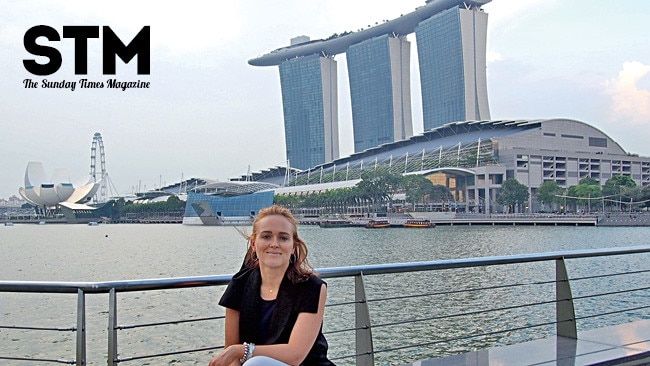Chaos theory in action
MICHAEL Gebicki takes a crash course in Indian traffic lore and finds a careful driver would be unable to cope behind the wheel.
PLEASE do not drive in the wrong direction, says a sign on the highway between Agra and Delhi. But they do. Trucks, ox carts, trishaws and cyclists all sailing merrily towards us, forcing the driver of our minibus to steer a slalom course that adds a sporting element to our speedy journey.
The chaos that is India's road network is wondrous to behold. Nowhere else does transport share the road with so many other facets of society – motorcycles, sacred cows, trucks, camel carts, child beggars, buses, auto rickshaws, funeral processions, wedding parties with grooms on horseback, tractors hauling trailers loaded with shaggy mountains of hay – providing a constant spectacle for the tourist that makes the on-board video redundant.
The most miraculous of all the vehicles on India's roads is the auto rickshaw, the scooter-engined three-wheeler that is the Subcontinent's universal people-mover. The most people I ever see packed into an auto rickshaw is probably 20. Five on the outside, certainly, and while it's impossible to know just how many there are inside, Ahmed, my driver, thinks that 15 seems a reasonable guess. Auto rickshaws are only licensed to carry five, but they get away with multiples of that number with a bribe to the local police. One thousand rupees ($35) per month is the going rate in rural areas, so I'm told.
A careful driver, such as your good self, would find it impossible to cope behind the wheel in India. First of all, you would need to forget everything you ever learned about the use of the rear-vision mirror, the art of filtering, lane discipline and all the other norms of safe road usage. If you are approaching an intersection and turning left, for example, it is vital that you join the traffic without stopping, and certainly without looking to slot yourself in. Just sail in with confidence and a blaring horn, and the oncoming traffic will rearrange itself to accommodate you. While this is fine if you're in the back seat of a tour bus, you're probably going to wish you were an armchair traveller the first time your trishaw rider performs this manoeuvre.
Indicators are another conundrum, and best avoided. After many visits to India, I am still not exactly sure what a truck driver means when his right indicator is flashing, but it seems to suggest that it's OK to pass on the right. Or it might just be that he really does intend to turn right, in which case you're going to find yourself in a pickle if you're halfway through an overtaking exercise.
Unless you cause an accident – in which case you might well be beaten to death by an outraged mob – road rage is a foreign concept. Moves that would have you or me spitting expletives in suburban Australia – the unsignalled U-turn, the push-in at traffic lights without a supplicating wave, the sudden swerve into oncoming traffic – are taken with the sort of calm that bespeaks a deep reservoir of inner peace.
But things are changing. On my most recent visit, I am sitting in the front seat of a vehicle and the driver tells me to buckle up. But then he spots the prayer mark that someone had just dabbed on my forehead. "In that case, don't worry," he says. "You are already protected."



